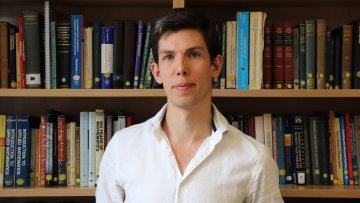15:00
Rational curvature invariants of 2-dimensional complexes
Abstract
I will discuss some new invariants of 2-complexes. They are inspired by recent developments in the theory of one-relator groups, but also have the potential to unify the theories of many well-studied families including small-cancellation presentation complexes, CAT(0) 2-complexes and 3-manifold spines, in addition to the motivating examples of one-relator presentation complexes. The fundamental result is that these invariants are the extrema of explicit linear-programming problems, and in particular are rational, computable and realised. The definitions suggest a conjectural “map” of 2-complexes, which I will attempt to describe.
15:00
Random character varieties
Abstract
Consider a random group $\Gamma$ with $k$ generators and $r$ random relators of large length $N$. We study the geometry of the character variety of $\Gamma$ with values in $\SL(2,\C)$ or more generally any semisimple Lie group $G$. This is the moduli space of group homomorphisms from $\Gamma$ to $G$ up to conjugation. We are in particular able to determine its dimension, number of components and Galois group, with an excellent control on the probability of exceptions. The proofs use effective Chebotarev type theorems as well as new spectral gap bounds for Cayley graphs of finite simple groups. They are also conditional on GRH. Joint work with Peter Varju and Oren Becker.
The Fields Medal is widely regarded as the highest honour a young mathematician can attain and is especially hard to win because the medals are only awarded every four years to mathematicians under the age of forty. This year Oxford Mathematician James Maynard is one of four recipients for his "contributions to analytic number theory, which have led to major advances in the understanding of the structure of prime numbers and in Diophantine approximation."
12:00
Mathematical reflections on locality
Note: we would recommend to join the meeting using the Zoom client for best user experience.
Abstract
Starting from the principle of locality in quantum field theory, which
states that an object is influenced directly only by its immediate
surroundings, I will first briefly review some features of the notion of
locality arising in physics and mathematics. These are then encoded
in locality relations, given by symmetric binary relations whose graph
consists of pairs of "mutually independent elements".
I will mention challenging questions that arise from enhancing algebraic
structures to their locality counterparts, such as i) when is the quotient
of a locality vector space by a linear subspace, a locality vector space, if
equipped with the quotient locality relation, ii) when does the locality
tensor product of two locality vector spaces define a locality vector
space. These are discussed in recent joint work with Pierre Clavier, Loïc
Foissy and Diego López.
Locality morphisms, namely maps that factorise on products of pairs of
"mutually independent" elements, play a key role in the context of
renormalisation in
multiple variables. They include "locality evaluators", which we use to
consistently evaluate meromorphic germs in several variables at
their poles. I will also report on recent joint work with Li Guo and Bin
Zhang. which gives a classification of locality evaluators on certain
classes of algebras of meromorphic germs.


